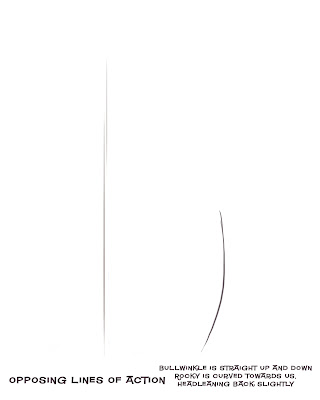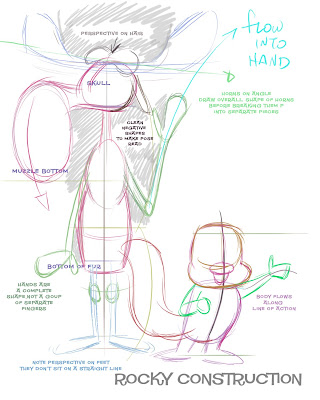Thanks to everyone who contributed to the blog as of Mar 30 08...
Benjamin Hernandez
John Faso
Blorch! Studios
Tim Maloney
Matthew Glenn Nunnery
Anthony Rizzo

I took all your cash and bought my sick chihuahua a warm sweater, so Killer thanks you too!
I found an old page of notes (from 1994) with tips to my storyboard artists on how to write natural sounding dialogue. It's your reward for contributing. I hope it's helpful:
DIALOGUE
The first thing a dialogue writer needs to know is that people do not speak the way a writer writes. Especially a cartoon writer.
Dialogue should sound natural, off the cuff, spontaneous.
It should be structured but it shouldn't sound structured, or deliberate.
It should be poetic, not in a rhyming sense, but in a lyrical, flowing sense.
Know your characters.
This doesn't mean that certain characters always say certain things; don't substitute catch phrases for personality.
Be aware of context - how the characters feel at this moment.
Suggested approaches:
(There is no right way to write dialogue.)
1. Structured Approach:
Figure out what a character needs to say in the story context, structure it for the story's purpose, then rewrite it in the character's words.
2. Empathic Approach
Be the characters: put yourself in the scene. Turn the lights out except for a desk lamp.
Know who the characters are and how they express themselves. Know the situation that the characters are in. Know their specific motivations and feelings at this moment in the story.
Now act. Live the scene. Spontaneously, free-form; just act the scene out loud.
Walk around the room, loosen up.
Improvise the dialogue. Just say your character's feelings as they gush out of you.
Have an assistant take notes.
Don't worry if all your lines don't connect perfectly or smoothly.
You are looking for inspirations.
*This is a good method for artists too.
If you are a S.B. or L.O. artist, Director or comic artist, act it out a few times to get used to it.
After you finish, have an assistant type up notes, categorize your ideas and directions, give them headings.
You edit, arrange, and smooth out, fill in gaps, connect ideas, and write your scene.
This is the better method for writing dialogue. You will find more surprises. Your dialogue will sound more natural and spontaneous.
*There is no perfect, calculated way to write good dialogue. Of all the elements of writing for the screen, writing, dialogue is the one that most closely resembles art.
This requires feeling as well as skill.
Good dialogue does more than just tell the story, it sounds good, it is aesthetically pleasing just for what it is.
CONSIDER THE ACTORS!
Good dialogue must be easy to read. A director always knows if a line or passage of dialogue is not working when the voice actor repeatedly stumbles through the line. This has happened to me many times. A writer (including me) will write a line that is just too long and the actor can't get enough breath to get it out. Or the words just don't flow easily together;they aren't musical, so the actor keeps getting tongue-tied.
To write good dialogue, you should have some experience reading dialogue, so you have empathy for the actors.
This is what's wrong with today's cartoon writers; they have no experience doing any of the things they are demanding of the actual creative people, so what they write simply doesn't work and everyone wants to kill them.
So...test your dialogue before you hand it in. Read it out loud. Is it smooth?
Ask someone else to read it out loud.
Dialogue is perhaps the hardest part of the cartoon writing process. Writers with a natural feel for dialogue are rare. I've worked with lots of funny people, or people who are good with structure and story ideas, but usually end up rewriting much of the dialogue myself.
With that said, it is also the most creatively rewarding part of the process of putting words together. The characters' dialogue are the only words that the audience or reader will ever hear or read of the writer's work. These words can directly affect the audience, can make it believe that the story is really happening.
Again: The audience will never hear your descriptions of plot or action, so use as few words as possible there and be strictly matter of fact and instructional:
Ren does this.
Then Stimpy does that.
Then this happens.
Then Stimpy says (looking deep into his own soul with extreme sincerity, religious resolve):
"I know now what I must do! I must use my gift of invention....to save Ren"
Then this happens.
Then Stimpy says (looking deep into his own soul with extreme sincerity, religious resolve):
"I know now what I must do! I must use my gift of invention....to save Ren"
Put your creativity into the dialogue. That will actually be heard.
And make it sound natural - even though it has dramatic purpose hidden under the faked spontaneity.



























































